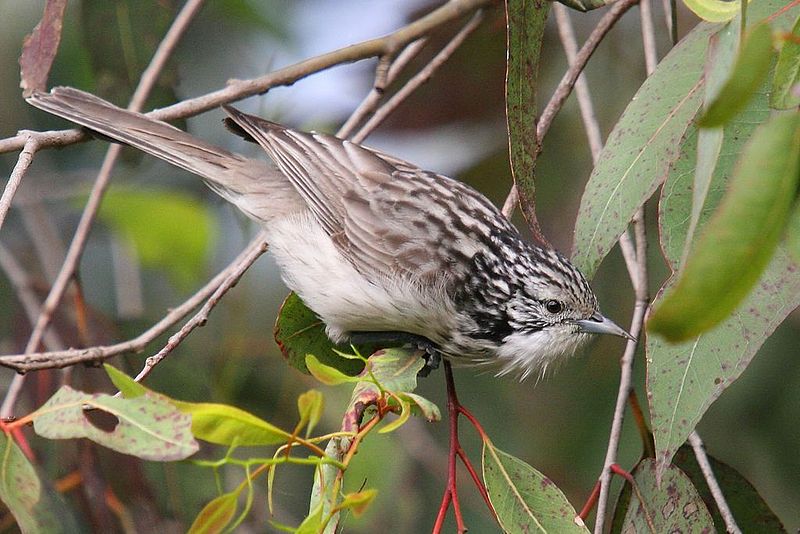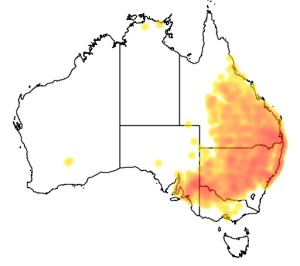Colours
Distinguishing features
The upper parts are generally light greyish brown with dark brown centres to the feathers, giving the appearance of stripes. These stripes are marked on the head and nape, less distinct on the rump and almost absent from the upper tail coverts. The underparts are whitish with faint streaks on the belly. The feathers of the upper breast and throat are long and pointed, giving the head a spiky appearance. The wing and tail are both moderately long with a rounded tip. The bill is short, with a sharp pointed appearance, dark blue-grey grading to a grey-black at the tip and around the nostrils. Legs and feet are blue-grey with black claws. The bare skin around the eye is dark brown and the iris a dark black-brown.
Males and females are similar in appearance. Juvenile birds are slightly browner than the adults, with buff or brown edges to the feathers of the wings and back. Juveniles have a duller, less streaked appearance than adults. Juveniles moult into adult plumage at around one year old. There is no seasonal difference in the plumage of breeding birds. (Wikipedia)
Size
- From 20 cm to 25 cm (Length of specimen)
Wingspan
- From 28 cm to 35 cm
Synonyms
Distribution
Distribution and habitat preferences
It is found mainly in eastern Australia, predominantly inland. It inhabits the drier open forests such as mallee and mulga but also heathland and mangroves on the coast. It is distributed through Eastern Australia from central and south-east Queensland extending inland to south-east South Australia, and to the coast south to the Tuggerah Lakes, New South Wales.
It occurs in a wide variety of habitats, including riparian woodlands such as River Red Gum, Bimble Box and Black Box with an understory of Lignum or Saltbush; mallee woodland, especially where mixed with thickets of Broombush or Emu Bush; woodlands of Native Pine growing on sand ridges; and semi-arid scrubland dominated by Acacia including Lancewood.
On the coast it is found in swamp forests of Paperbark and Casuarina, and in developed areas containing native and exotic trees and shrubs such as caravan parks, reserves, gardens, and farms and orchards. (Wikipedia)
Diet
It primary food source is insects, and its diet includes seeds and fruits as well as nectar. Its bill has evolved to a short, straight, sharply pointed shape more suited to probing crevices for insects, than to probing flower tubes.
It has the honeyeater’s brush tongue and takes nectar from shallow flowers such as eucalypt blossoms. It is arboreal, mostly feeding amongst the foliage in the canopy of trees. Most food is obtained from the leaves, and less often from the bark or flowers and fruit. The major foraging methods are glearing from leaves and dead branches, probing under loose bark and in crevices, probing woody fruits of Black Oak, probing flowers of Yorrell (Eucalyptus gracilis) and sallying for insects. It occasionally hangs upside-down to extract insects. (Wikipedia)


